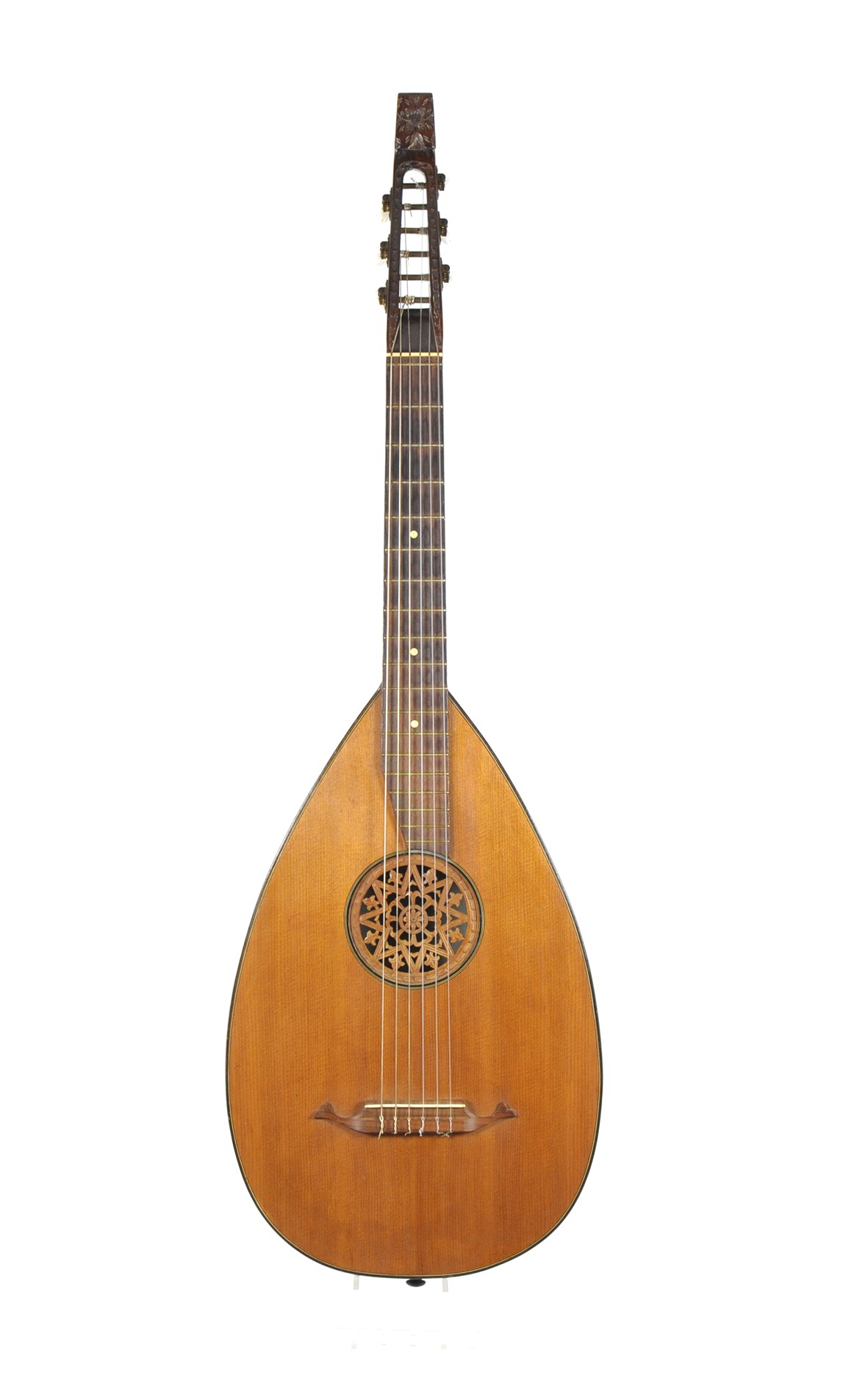Sold
GermanMarkneukirchen lute, approx. 1960
This special kind of musical instrument is sometimes called „lutar“ or „Wandervogellaute“, a guitar with a lute-shaped body that made musical history in the German Wandervogel movement of the early 20th century. Even today many folk musicians love this instrument, as it is perfectly accessible for any guitarist. This lute-guitar that was built approx. 1960 in the workshops of the VEB Sinfonia...
This special kind of musical instrument is sometimes called „lutar“ or „Wandervogellaute“, a guitar with a lute-shaped body that made musical history in the German Wandervogel movement of the early 20th century. Even today many folk musicians love this instrument, as it is perfectly accessible for any guitarist. This lute-guitar that was built approx. 1960 in the workshops of the VEB Sinfonia enterprise in Markneukirchen, Saxony, is a good example for the constant interest in this kind of instrument. The shell-shaped body was crafted of 7 relatively wide braces of wood with a beautiful grain, that is visible under the very transparent varnish. The medium grained spruce of the top features the well-known quality of tonewoods from the Vogtland region around Markneukirchen. The lute rose and the carvings on the edges of the pegbox are tastefully designed ornaments. The lute-guitar bears a numbered original label and additionally a number stamp on the head of the pegbox. It is preserved very well, with some minor flaws at the back, and was thoroughly worked over by the specialist luthiers in our atelier, who made it ready to play. This instrument is a true rarity, as musicians do not find lute-guitars of such high quality and of this provenance very often. We offer it including the case and a set of spare strings.
- Inventory no.
- 2459
- Maker
- VEB Sinfonia
- Provenance
- Markneukirchen
- Year
- 1960 circa
- Length of back
- 52.1 cm



Fig. |
